Don't miss our holiday offer - up to 50% OFF!
Sleeve Type Expansion
$1.50
Sleeve Type Expansion Bolt (also known as Sleeve
Expander or Sleeve-Type Tube Expander) is another widely used mechanical expanding tool for sleeve expansion (the process we discussed earlier). It’s a simple, rugged, and reliable design, favored in many industries for its efficiency and ease of use
Sleeve Type Expansion Bolt (also known as Sleeve
Expander or Sleeve-Type Tube Expander) is another widely used mechanical expanding tool for sleeve expansion (the process we discussed earlier). It’s a simple, rugged, and reliable design, favored in many industries for its efficiency and ease of use. Let’s dive into the details!
What is a Sleeve Type Expansion Bolt?
A Sleeve Type Expansion Bolt is a solid, cylindrical expanding tool consisting of:
Main Body (Sleeve) : A hollow, tapered cylinder (the “sleeve”) with an internal taper.
Expanding Plug (Mandrel) : A solid, tapered rod (the “bolt”) that fits inside the sleeve.
Threaded End : The mandrel has a threaded section for attachment to a pulling device.
Pull Rod (optional) : Sometimes integrated or attached for easier handling.
How Does a Sleeve Type Expansion Bolt Work?
The Sleeve Type Expansion Bolt expands a tube by mechanically deforming it through a wedging action. Here’s the step-by-step process:
Step 1: Assembly & Insertion
The Sleeve Type Expansion Bolt (sleeve + mandrel) is inserted into the tube (already seated in the sleeve and tubesheet).
The mandrel is aligned with the sleeve’s internal taper.
A pulling device (e.g., hydraulic tensioner, manual puller) is attached to the threaded end of the mandrel.
Step 2: Expansion
Tension is applied to the mandrel, pulling it through the sleeve.
The tapered mandrel wedges into the tapered sleeve, causing the sleeve to expand radially.
The expanding sleeve contacts and pushes against the inner surface of the tube.
The tube material plastically deforms, expanding outward into the gap between the tube and the tubesheet sleeve.
The tube fills the gap, creating an interference fit with the sleeve.
Step 3: Joint Formation
The expanded tube mechanically locks with the sleeve (interference fit).
The sleeve is firmly gripped by the tubesheet hole (friction fit & mechanical grip).
A strong, metallurgical bond forms between the tube, sleeve, and tubesheet.
Key Features of Sleeve Type Expansion Bolts
Simple Design: Fewer moving parts reduces wear and maintenance.
High Force Transmission: The wedging action generates high radial forces for efficient expansion.
Self-Aligned: The tapered mandrel and sleeve self-center during expansion.
Adjustable Expansion: Changing the mandrel taper angle or sleeve length adjusts the expansion ratio.
Durable: Built for heavy-duty applications with high-strength materials (e.g., H13 steel).
Types of Sleeve Type Expansion Bolts
Standard Sleeve Expander: For general-purpose expansion (3% to 6% expansion ratio).
Heavy-Duty Sleeve Expander: For thick-walled tubes or high-expansion ratios (up to 10%).
Long-Travel Sleeve Expander: For deep tubesheet applications (extended sleeve length).
Segmented Sleeve Expander: Uses split sleeves for ease of removal after expansion.
Advantages of Sleeve Type Expansion Bolts
Easy to Operate: Simple pull-and-expand mechanism (manual or hydraulic).
Cost-Effective: Reusable expanders reduce tooling costs.
Uniform Expansion: Consistent radial force ensures even tube deformation.
Versatile: Suitable for various tube materials (steel, copper, stainless steel, etc.).
Compact: Ideal for tight spaces in heat exchangers, boilers, and condensers.
Common Applications
Heat Exchangers: Shell-and-tube, plate-and-frame, and finned-tube exchangers.
Boilers & Steam Generators: Tube-to-tubesheet joints in power plants.
Condensers: Surface condensers, jet condensers, and vacuum condensers.
Pressure Vessels: Reactors, separators, tanks, and autoclaves.
Oil & Gas: Heaters, coolers, and tubular reactors.
Specifications & Sizing
Sleeve Type Expansion Bolts are custom-sized based on:
Tube Inner Diameter (ID): Range: 1/4″ to 12″ (6 mm to 300 mm).
Tube Wall Thickness: 0.020″ to 0.5″ (0.5 mm to 13 mm).
Expansion Ratio: Typically 3% to 8% (application-dependent).
Mandrel Taper Angle: 3° to 6° (affects expansion force and ratio).
Sleeve Material: High-strength steel (e.g., 4140, H13) for durability.
Quality Control & Testing
Calibration: Expanders are pre-calibrated for specific expansion ratios.
Performance Testing: Pull-out tests and leak tests validate joint strength.
Dimensional Checks: Verify mandrel taper, sleeve ID/OD, and assembly clearance.
Material Certifications: Compliant with standards (e.g., ASME, ASTM, DIN).

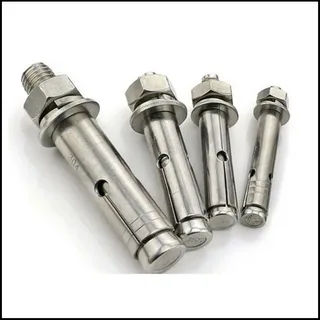
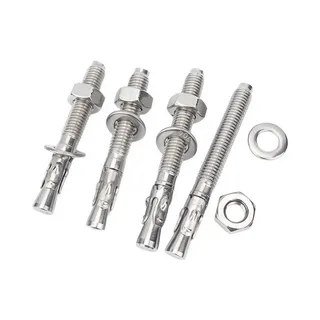

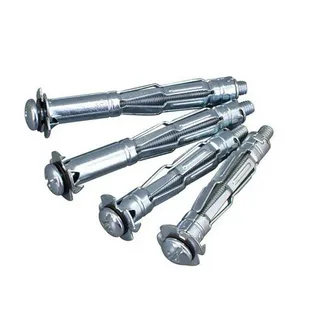
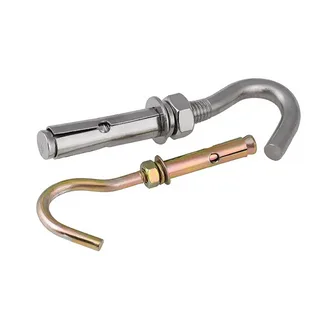
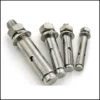
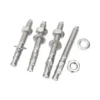
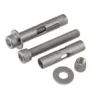
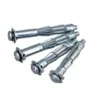
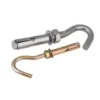
Reviews
There are no reviews yet.